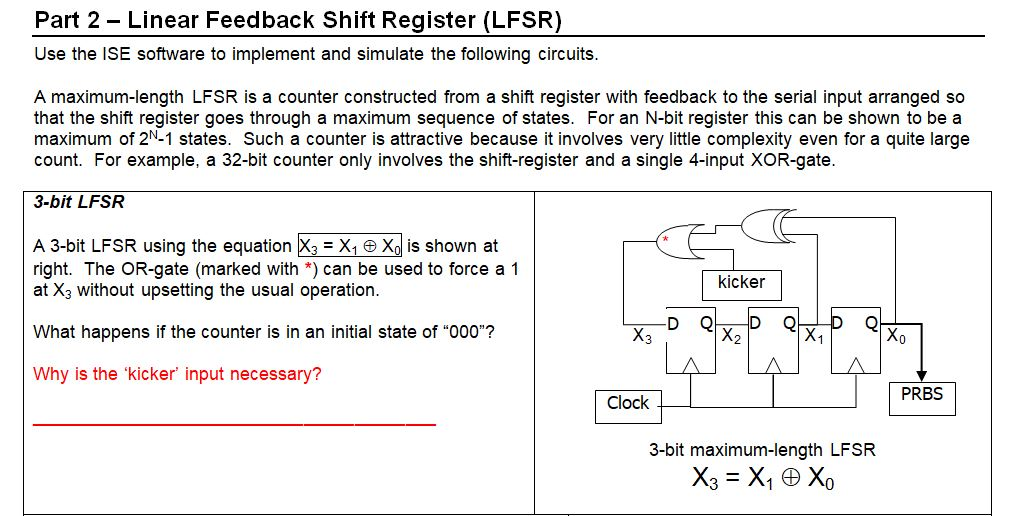

Just like with ordinary LFSRs, where you need to find the correct locations of the feedback taps, you need to find the correct set of m+1 multiplicative constants in order to get the maximum length sequence (or M-sequence) out of it. A great deal also appears to be patented judging by the ratio of patents that came up in the search. There is quite a bit of theory behind, of course, but I had trouble finding a higher-level description of it on the internet. Basically you replace the XOR operations in the feedback loops with arithmetic multiplication and addition modulo n. It turns out that there exists a generalization of the LFSR for n states. Exception is the state that contains all zeroes, but that is easy to correct with a special case. for each step they insert a single digit at the beginning of the register and drop one at the end). These are digital circuits that will generate all 2 m-1 different sequences of length m in a shift register (i.e. Linear feedback shift registers are actually direct solutions to such a problem, albeit only if you limit yourself to two characters ( n = 2). As Luka Rahne pointed out to me (on Facebook, no less), there's a different branch of mathematics that offers a much better approach to this problem and even has a connection to my home field of electronics. It turned out my venture into the graph theory was a bit of a dead end. Lecture notes in computer science, vol 2523.In my last post I was trying to figure out an optimal strategy for guessing a combination for a lock that only checks the last m symbols entered. Cryptographic Hardware and Embedded Systems – CHES 2002. Klimov A, Shamir A (2003) A new class of invertible mappings. Lecture notes in computer science, vol 4859. Sekar G, Paul S, Preneel B (2007) Related-key attacks on the Py-family of ciphers and an approach to repair the weaknesses.

SASC: the State of the Art of Stream Ciphers, NoE ECRYPT Workshop Technical Report, University of Waterloo, CORR 2000–20įiliol E, Fontaine C, Josse S (2004) The COSvd ciphers. Youssef AM, Gong G (2000) On the quadratic span of binary sequences. Lecture notes in computer science, vol 435. Jansen CJA, Boekee DE (1990) The shortest feedback shift register that can generate a given sequence. Jansen CJA (1989) Investigations on nonlinear stream cipher systems: construction and evaluation methods. Golomb SW (1982) Shift register sequences, revised edition.


 0 kommentar(er)
0 kommentar(er)
